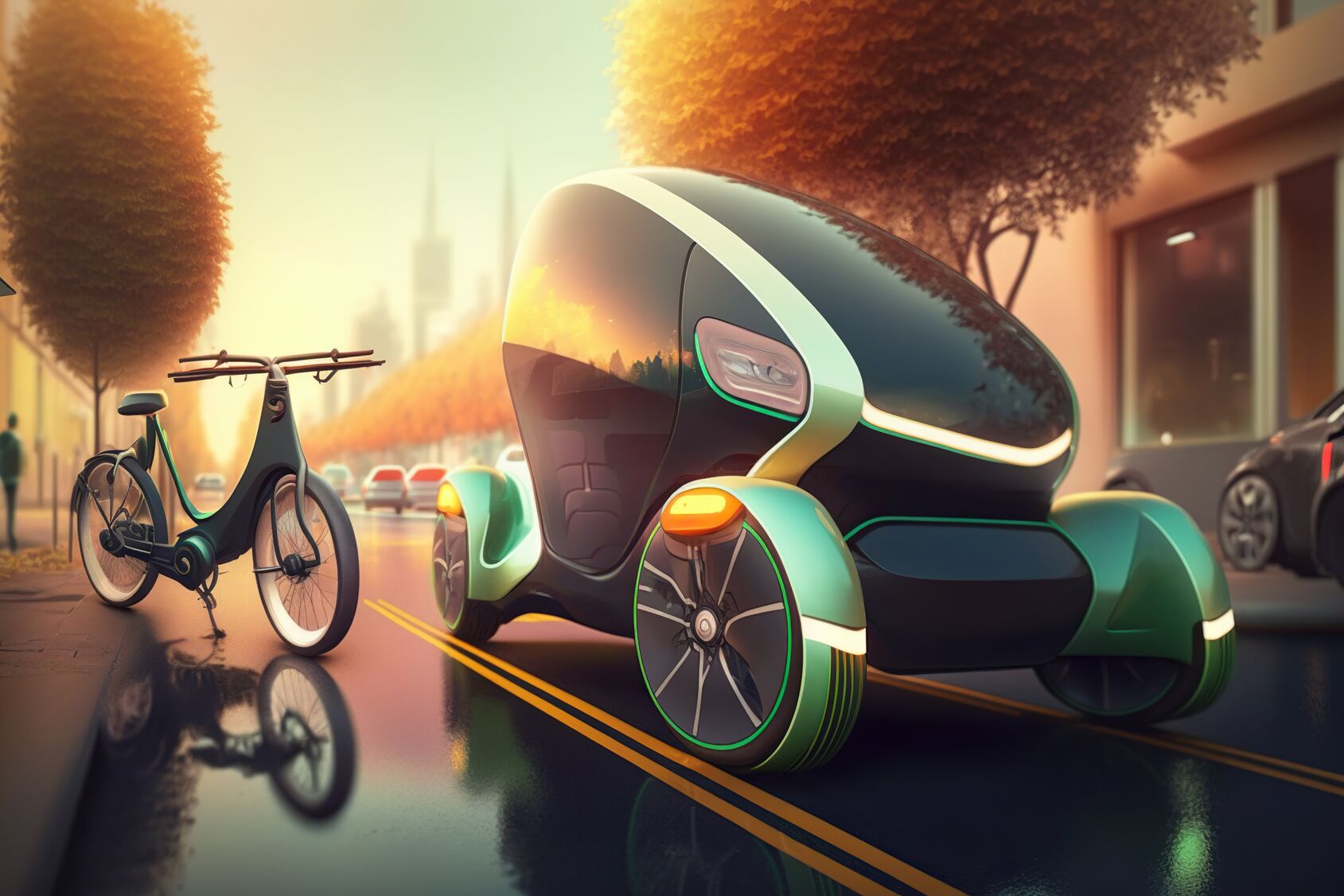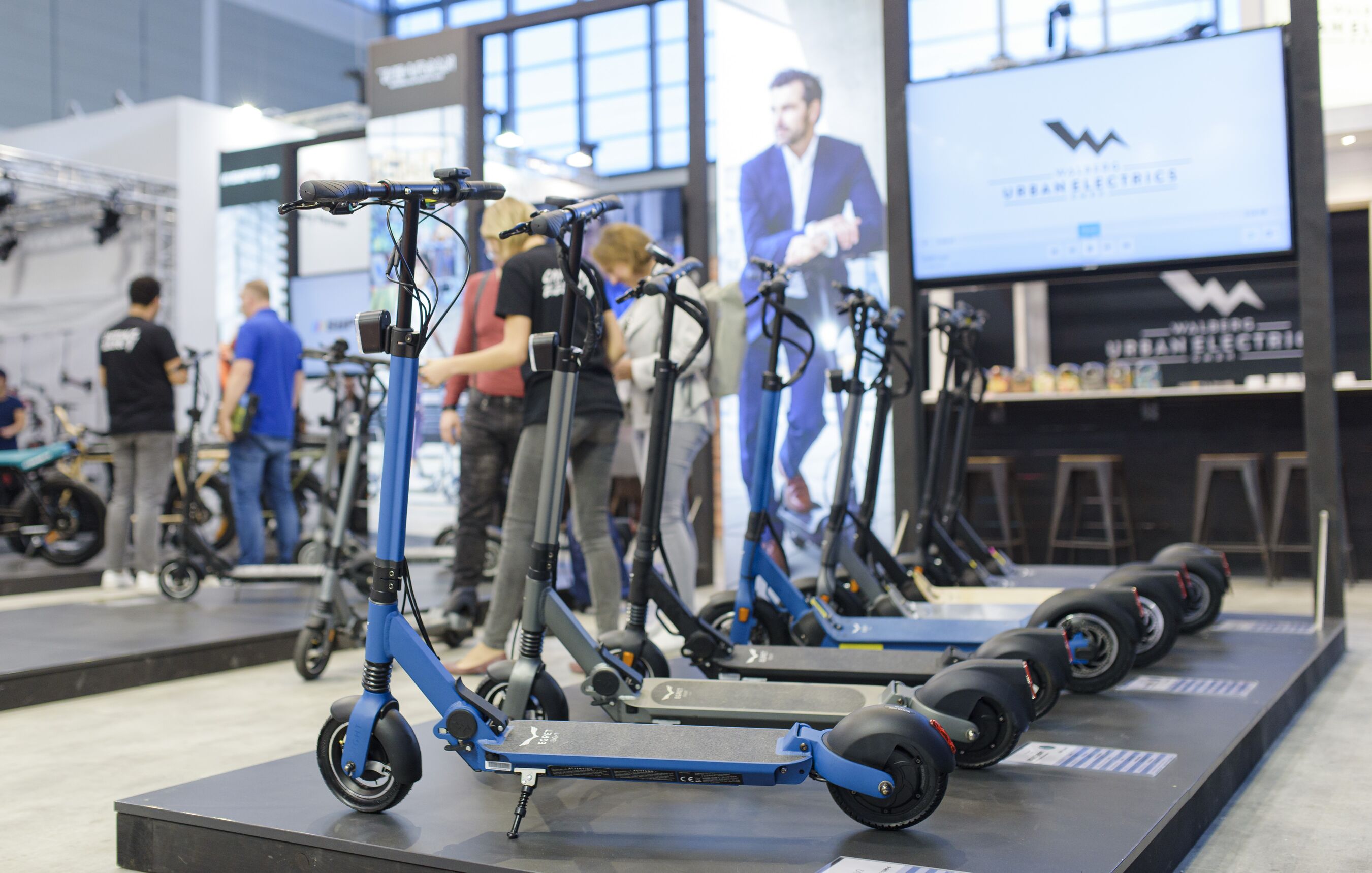Convert - but why?

Increasing urbanisation and climate change are also presenting companies and public institutions with new challenges when it comes to designing their vehicle fleets. Alternative forms of mobility such as light electric vehicles (LEVs) are becoming increasingly important. The group of LEVs includes a variety of vehicles that are powered by an electric motor and are not considered motor vehicles due to their small size and power, such as electric bicycles, e-scooters or electrically powered vans or small vehicles. The boundaries within the light vehicle classes often appear fluid - casually speaking, one can remember that these are exclusively vehicles that are not cars. The DLR visualises it more precisely in a study from 2022 you can find here.
From a purely economic point of view, the advantages are obvious: LEVs are cheaper to buy and maintain, as the vehicles are usually much smaller than passenger cars and often have a lower top speed. At the same time, LEVs often make it possible to make a much more focused decision for the application - the choice is now wide. There can also be clear advantages in terms of maintenance: If there is already an infrastructure for generating one's own energy (e.g. through photovoltaics), the energy costs of electric vehicles are significantly reduced, especially since their consumption is noticeably lower than that of a classic car.
In addition to the obvious advantages, a number of studies now also prove the usefulness of this vehicle group. A 2020 study by the DLR in cooperation with the IMU Institute concludes that the use of LEVs in cities has great potential for reducing emissions and noise. According to this study, the use of e-bikes (and e-load bikes) and e-scooters in particular is a viable alternative to car traffic. Furthermore, LEVs can also contribute to making traffic more fluid and safer.
(DLR, 2020: "Small and Light Electric Vehicles: An Analysis of Feasible Transport Impacts and Opportunities for Improved Urban Land Use").
Another study by difu from 2014 shows that the use of LEVs offers economic advantages. By foregoing fuel costs and lower maintenance costs, businesses and public institutions can achieve significant savings. (DIFU, 2014, "Elektromobilität im städtischen Wirtschaftsverkehr").
A recent study by McKinsey also comes to a very similar conclusion.
A participatory process
However, the transition to LEVs also requires preparation and investment, such as the selection of suitable vehicles and the training of staff. A good understanding of the purposes of the current vehicles and an active dialogue with drivers are key to both gaining insight and generating acceptance. Even if experience shows that the changeover makes sense in the long term and can help to reduce costs and make an important contribution to CO2 neutrality - in a participatory exchange it must become clear to future users why the changeover should take place and which advantages outweigh the previous situation.
The challenges here also include culturally grown structures and demands. If, often over many years, certain comforts that have arisen from the previous vehicle fleet have become entrenched, then a fleet change can be perceived as an undesirable intervention that is associated with disadvantages. Talking to drivers at an early stage to understand how they use the vehicle and what they want from it will pay off in the long run, even if it means extra work in the run-up.

Recommendations and vehicles
Actively involve your drivers in the process. A fleet changeover also means that your employees will have to adjust and that some of the features they have grown fond of in their previous vehicles may no longer be available with the changeover. Inevitably, you have to weigh things up and find a balance between the economic and commercial advantages for the company and the focus on motivated and satisfied employees in the long term. Show your staff the benefits of LEVs, which are not only economic - the long-term positive effects on people and the environment, as well as their own health, should always play a role. In addition, create direct added values that your employees will gain from the changeover. If necessary, create opportunities to use the vehicles privately and outside of working hours, organise an active exchange and get feedback. To get feedback in advance, it is advisable to take a look at what is currently available on the market. Although this is constantly growing, many overviews can often be found in scientific surveys. In a study by e-mobil BW, there are insights into the opportunities for small and light electric vehicles as well as an overview of some vehicles in the different classes.
Outlook
At this year's EuroBike, more than 400 exhibitors, (almost) all from the LEV sector, will be presenting their products in Hall 8 on 30,000 sqm. So it's worth taking a close look at the large range on offer and exchanging ideas intensively.
For those who were not able to sufficiently exchange information on this topic at this year's EuroBike and are looking for further best practice examples, we recommend the bfp FORUM 2023, on 17 and 18 October 2023 in Mainz: https://www.fuhrpark.de/bfp-forum-2023-auf-in-die-moderne-corporate-mobility.
In summary, the conversion of the vehicle fleet to LEVs offers numerous advantages, which are also supported by various studies. Especially in urban areas, the use of LEVs can help to reduce various emissions, improve air quality and enable more economical operation compared to vehicles with combustion engines.
Further information about the author Christoph Neye

